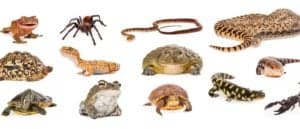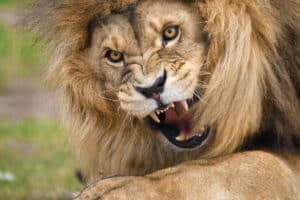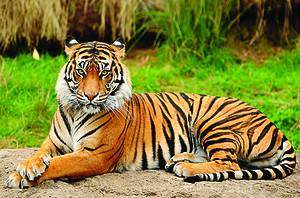Some people want more excitement from their pets than what traditional dogs and cats can offer. While the laws around exotic animals vary widely in each state, there are plenty of unique animals that are allowed to be kept as part of the family. However, do these animals make for good pets? Keep reading to discover 15 baffling pets that are legal to own in the United States.
1. Skunks

Skunks are easily recognized by their distinctive black-and-white striped coats.
©Lynn_Bystrom/iStock via Getty Images
A skunk is a risky choice for a household pet, given its ability to spray a foul-smelling substance from its anal glands. However, these curious and clever animals are legal to own in 17 states. Most states require skunk owners to complete an application and submit to a home inspection, but in Wyoming, South Dakota, and Iowa, skunk owners can enjoy their pets without those requirements.
Striped skunks are the only skunk species that is suitable to be kept as a pet. Pet skunks should be purchased from a breeder, and many skunk owners elect to remove the animal’s scent glands while they’re still young.
In captivity, skunks can live for up to 10 years. They require a large amount of space to roam and explore, including space outside to burrow. Pet skunks need a high-protein diet, which can include eggs, fish, chicken, and feeder insects like worms and roaches.
2. Raccoons
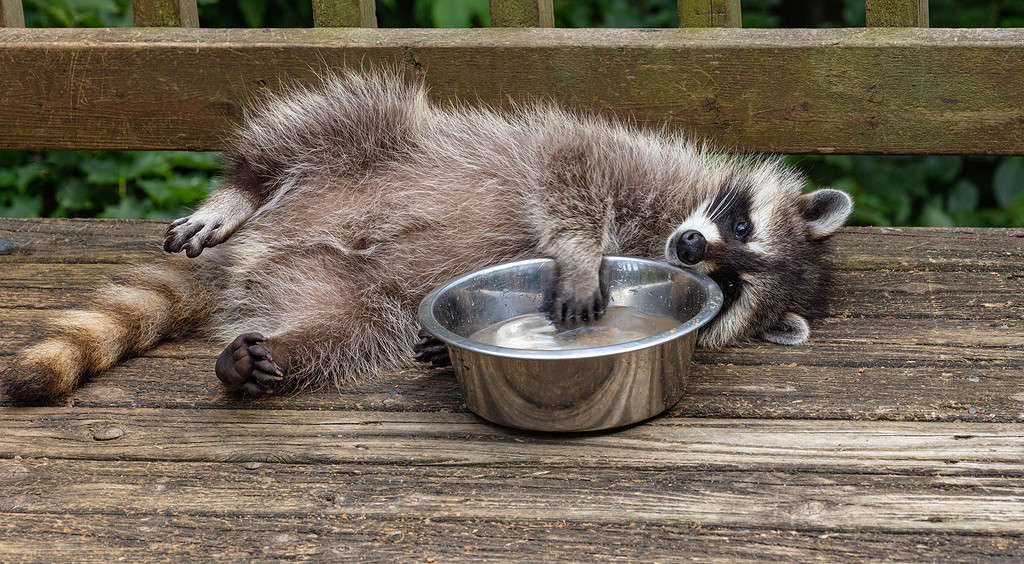
The word “raccoon” is derived from the Powhatan phrase meaning “animal that scratches with its hands.”
©Anne Wright Dobbelsteyn/iStock via Getty Images
Known for their cunning and mischievous ways, raccoons are legal to keep as a pet in 16 states. However, raccoons are high-maintenance pets. They can be more aggressive than traditional household pets since aggression is a raccoon’s key defense mechanism.
Their paws are extremely dextrous, making it easy for pet raccoons to access cabinets and food containers. Raccoons are persistent and can learn how to open doors, which means they should not be left unattended in your home. Many raccoon owners opt to use crates to corral the animals when they’re away.
Pet raccoons should be purchased from a breeder since handling them while they’re young helps to socialize them. Like other exotic pets, it can be difficult to find veterinary care or boarding accommodations for raccoons if you want to go out of town.
3. Opossums
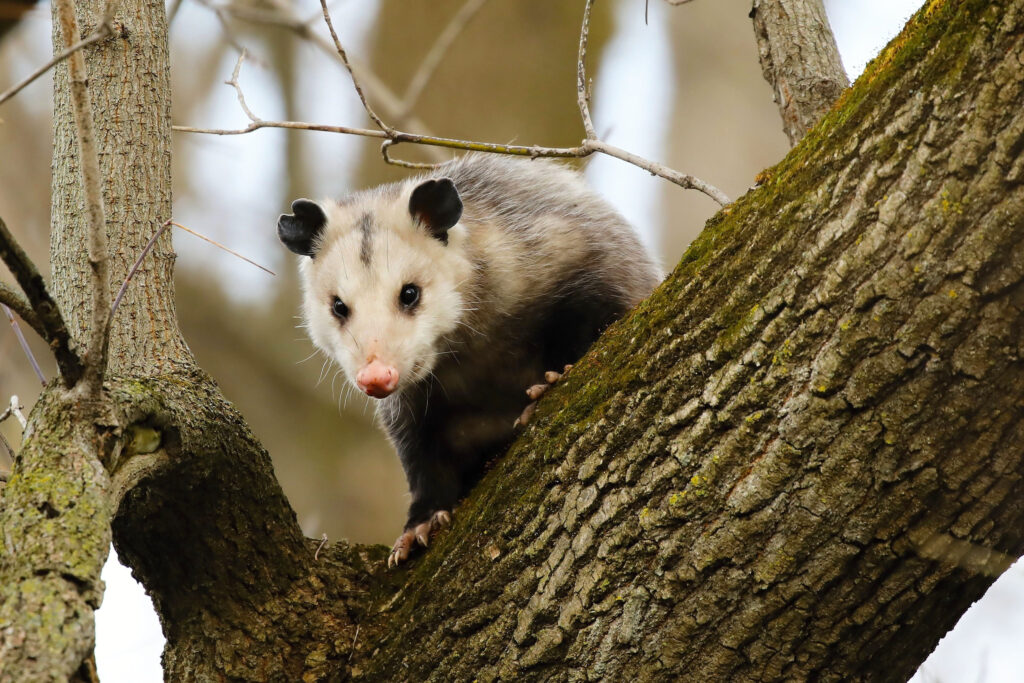
Opossums are often called possums, although the
possum
is a different animal found in the Eastern Hemisphere.
©Karel Bock/Shutterstock.com
These often misunderstood animals are the only marsupials native to North America. Opossums are legal to own as a pet in Arkansas, Wisconsin, Connecticut, and Wyoming without any permits, and 23 other states allow pet opossums with a permit.
The short-tailed opossum is the more popular variety to keep as a pet due to its smaller size. While opossums can be affectionate, they are also known for their defensive hissing. Opossums are not known to be aggressive and will typically exhaust their defense mechanisms — including playing dead and emitting a foul odor from their anal glands — before attacking.
Opossum owners are recommended to keep their pets in a large and well-ventilated cage since these animals are talented escape artists. Their diets are varied, and pet opossums can eat a combination of cat food, live insects, fruits, and vegetables. In captivity, opossums can live for up to six years.
4. Foxes
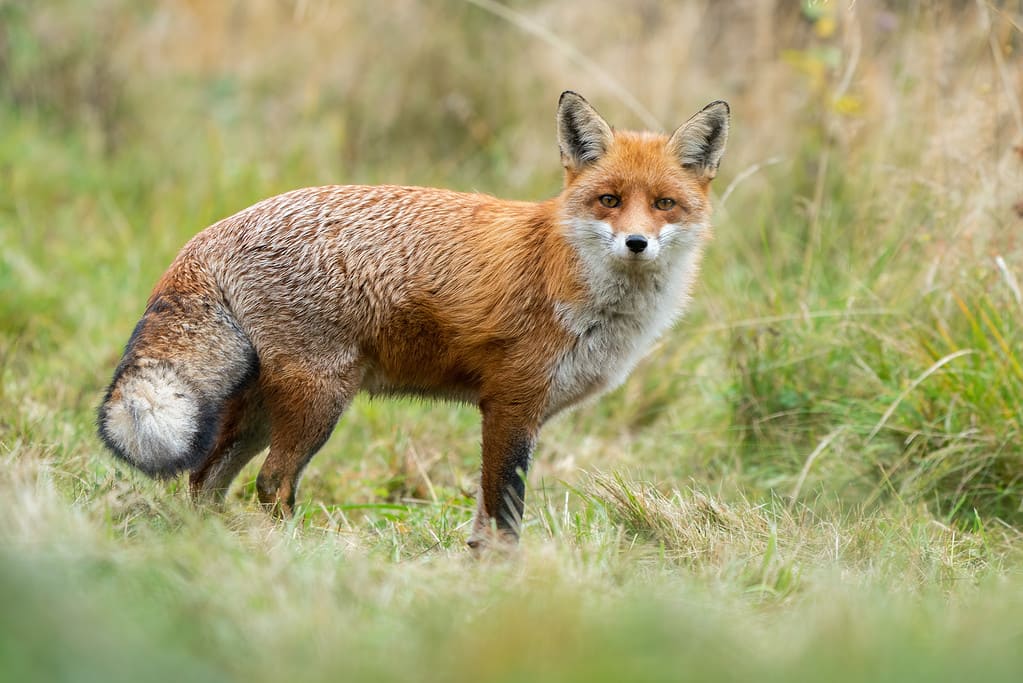
Foxes can be found on every continent except Antarctica.
©JMrocek/ via Getty Images
In many areas, fox ownership is banned or limited due to the animals’ potential environmental impact and concerns about the diseases they can carry. However, it is legal to own a pet fox in 18 states without a permit, as well as in three states with a permit.
Foxes are playful and energetic, which can make them an attractive choice for an exotic pet. They are also highly trainable and can be taught how to use a litter box and walk with a harness and leash.
Their high energy levels and loud, shrill vocal expressions can also make foxes challenging to keep in a house. They are prone to dig at carpets and can easily destroy furniture. Foxes also have a distinctive musky odor that some people find overpowering. Additionally, foxes mark their territory by urinating and defecating, which is a behavior that cannot be corrected.
5. Squirrels
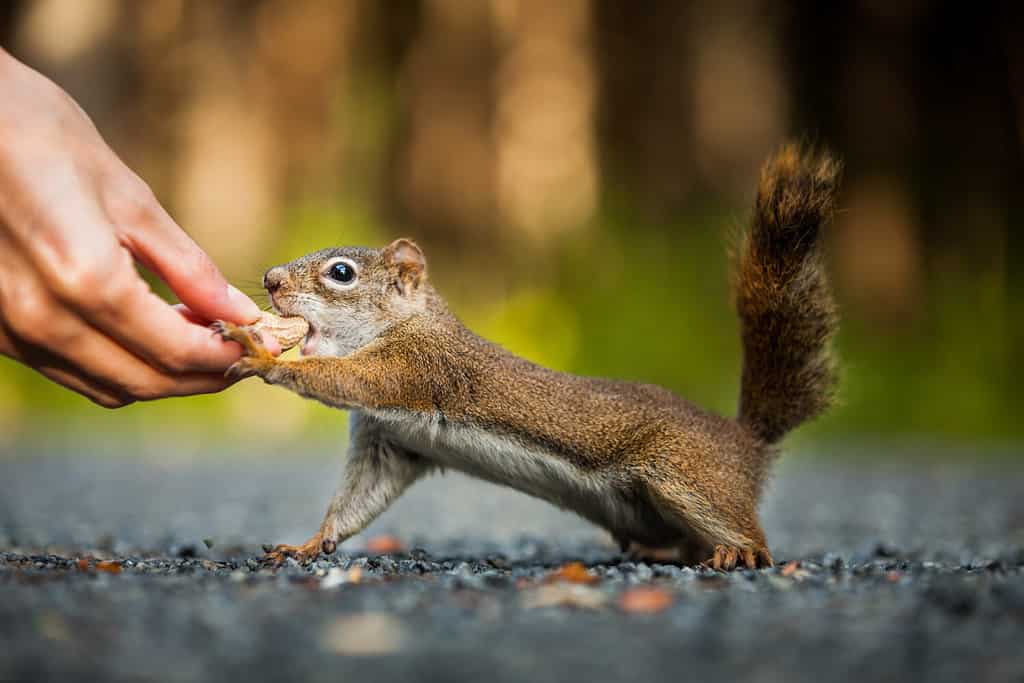
Over 200 species of squirrels exist throughout the world.
©Benoit Daoust/Shutterstock.com
Often thought of as pests, squirrels are legal to keep as a pet in 21 states. Massachusetts, New Jersey, and Montana only allow residents to keep flying squirrels as pets. Additionally, South Dakota permits pet squirrels only if they were purchased in a state where they’re legal.
Squirrels are industrious and energetic animals. They’re also highly intelligent, demonstrating the ability to learn and adapt to their environments. Squirrels are well-known foragers, finding and storing nuts for the winter season. Unfortunately, this instinct could wreak havoc inside your home as squirrels can dig into furniture in search of food.
Their need to forage and chew on nuts is also to keep their front teeth in check. A squirrel’s front teeth grow up to six inches a year throughout its life. In captivity, squirrels can live for nearly 20 years.
6. Porcupines
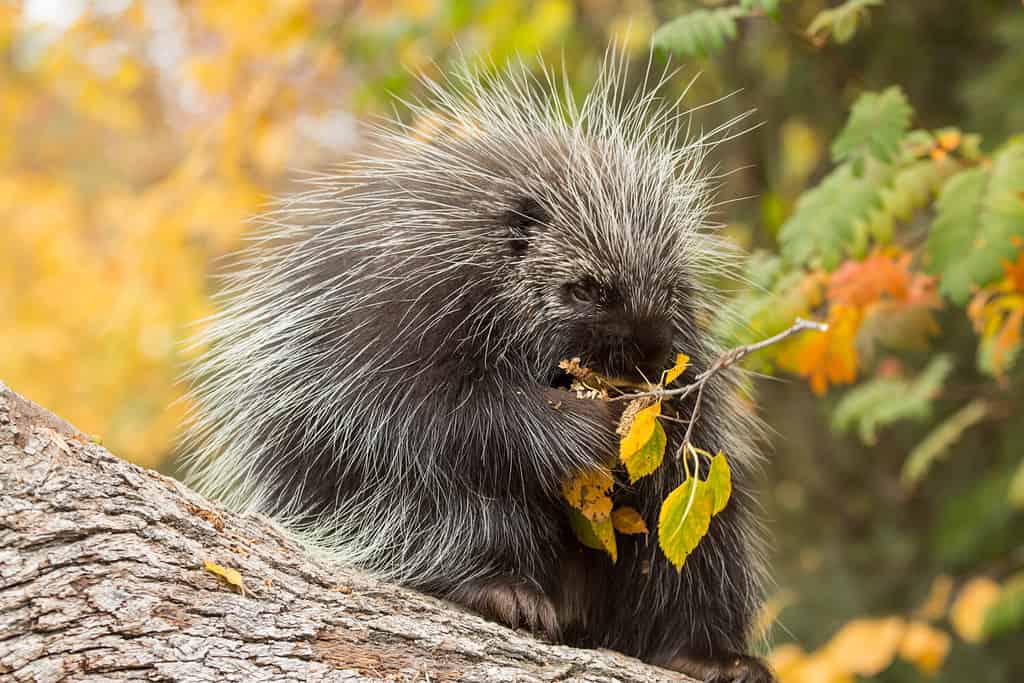
A grouping of porcupines is called a prickle.
©Warren Metcalf/Shutterstock.com
While most states prohibit their ownership as pets, a few states permit residents to own porcupines. They are an unusual pet choice since their fur consists of sharp, spiky quills, which they can raise or shed when they feel threatened.
Porcupines are mostly solitary and docile. They are nocturnal creatures and subsequently have poor eyesight. Porcupines are also avid, albeit clumsy, tree climbers, which could lead to some noisy nights for porcupine owners.
Porcupines are omnivores, and their diet can include tree bark, insects, nuts, and roots. In captivity, their lifespan is around 10 years, although a porcupine at the Prague Zoo lived for over 30 years.
7. Prairie Dog
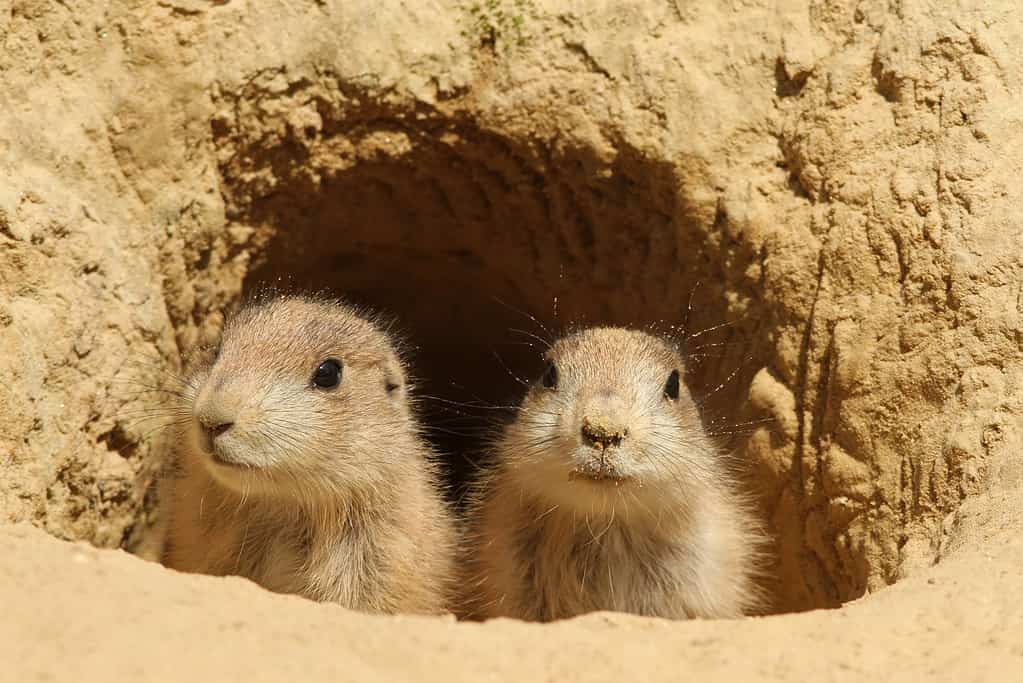
Unlike many other rodents, prairie dogs are active in the daytime hours and sleep during the nighttime.
©Henk Bentlage/iStock via Getty Images
Native to Central and North America, prairie dogs are legal to own in several states. Prairie dogs are rodents who make their homes by burrowing complex networks of underground tunnels.
These animals are highly social, living in colonies consisting of large family units. If they are socialized to humans, prairie dogs can be affectionate pets. However, due to their social natures, they require near-constant interaction and should ideally be kept with other prairie dogs.
They also have a high need to chew since their teeth continue to grow throughout their lives. Additionally, prairie dogs can be territorial and aggressive if they feel threatened. As pets, prairie dogs can live for up to 10 years.
8. Capybara

Capybaras have webbed toes, making them excellent swimmers.
©iStock.com/Dave Matchett
Only a handful of states prohibit capybaras as household pets. Native to South America, capybaras are the world’s largest rodents, with weights that can exceed 150 lbs. They are semi-aquatic creatures and prefer habitats in marshes, swamps, rivers, and lakes.
Capybaras are social animals and live in large groups called herds. Within their herds, capybaras are extremely vocal, using a variety of chirps and barks to communicate. Capybaras exhibit a laid-back attitude toward humans and other animals. Observers have noted their peaceful co-existence and even socialization with other species.
Despite these positive qualities, capybaras are high-maintenance pets. They shouldn’t be left alone and do best with other capybaras. These animals should have access to an outdoor enclosure with a pond or freshwater pool to mimic their natural habitat. Capybaras are herbivores and mainly eat aquatic plants and grasses, requiring 6-8 pounds of food each day.
9. Wallabies

A group of wallabies is called a troupe, a court, or a mob.
©Shmenny50/ via Getty Images
There are many states that allow pet wallabies without restrictions, and several more allow them with a permit. Wallabies are marsupials native to Papua New Guinea and Australia, and several species of wallabies are classified as endangered or threatened.
These animals are members of the Macropodidae family, along with kangaroos. The main difference between the two is their size; wallabies are much smaller than kangaroos, although they have similar large tails, which they use for balance.
Dutch scientists found that some species of wallabies can make great pets. However, these animals can require high levels of care and maintenance. Their back legs allow them to jump almost four feet high, so any outdoor enclosure must have walls high enough to contain them.
10. Monkeys
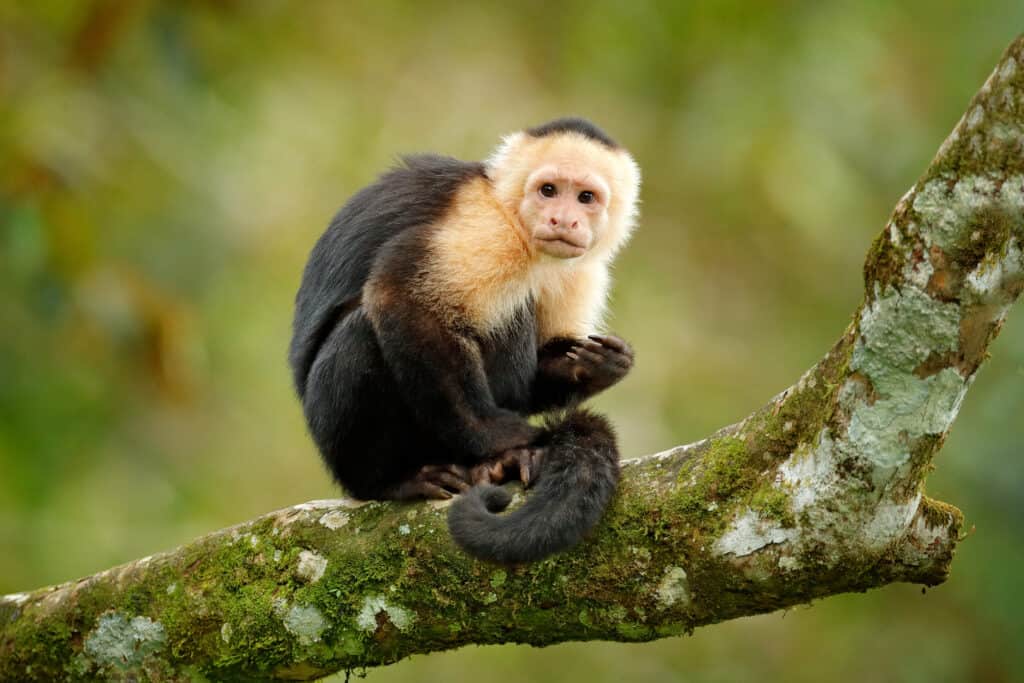
In Illinois, the only monkey species allowed as a pet is the capuchin monkey.
©Ondrej Prosicky/Shutterstock.com
The restrictions on pet monkeys vary widely by state. While some states have outright bans on all monkeys, many states specify some permissible species. These animals may seem like an attractive choice due to their intelligence, but monkeys are high-maintenance and demanding pets.
Monkeys are curious and social animals, but they are also territorial and can be highly aggressive. Some species of monkeys can live for over 50 years, far longer than traditional household pets. Pet monkeys require high levels of interaction and may produce loud screeching sounds or become destructive if their social needs are not met.
11. Hedgehog

Hedgehogs are among the oldest mammals on Earth.
©yul38885 yul38885/iStock via Getty Images
Pet hedgehogs are legal in a majority of U.S. states, with only five states banning them outright. Hedgehogs are known for their distinctive spiny coats, which are their primary defense mechanism.
Hedgehogs are small, typically weighing less than four pounds, but their pet expenses can add up quickly. These animals should be kept in an aquarium with a capacity of at least 40 gallons. Hedgehogs are excellent climbers, so make sure the enclosure’s lid is secure. A hedgehog’s enclosure should include a warming pad or lamp, nesting materials, and objects for the hedgehog to hide under.
Additionally, hedgehogs need toys and regular playtime. Pet hedgehogs can be fed dry kibble, mealworms, fruits, and vegetables. In captivity, they can live up to 10 years.
12. Alligators
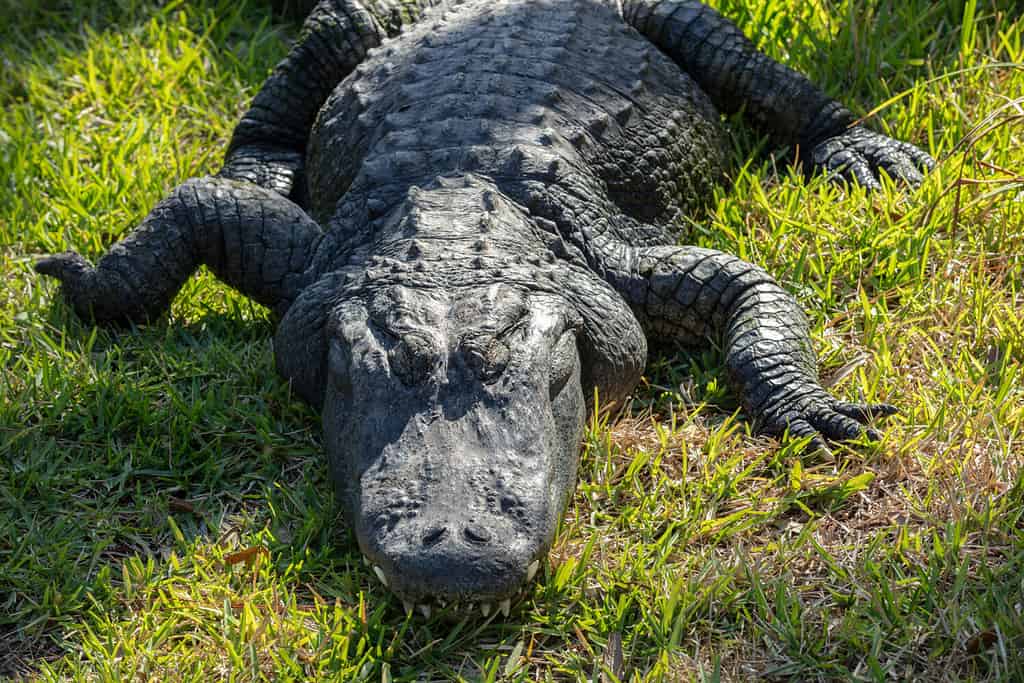
An alligator’s bite is one of the strongest in the world.
©J.A. Dunbar/Shutterstock.com
Although illegal in a majority of states, there are 17 states that allow alligators as pets. Choosing an alligator as a pet is truly baffling because alligators have been known to attack humans. Alligators are native to the southeastern U.S. and portions of China, where they inhabit freshwater swamps, ponds, marshes, and rivers.
These animals are predators, preying upon birds, small mammals, fish, and even larger animals such as deer. While rare, alligators will also attack humans who encroach on their territory.
In addition to state regulations, the federal government regulates alligator ownership because the U. S. Fish and Wildlife Service classifies alligators as a protected species. People who own alligators as pets must provide an enclosure with land and enough water for the animal to submerge itself.
13. Bush Baby
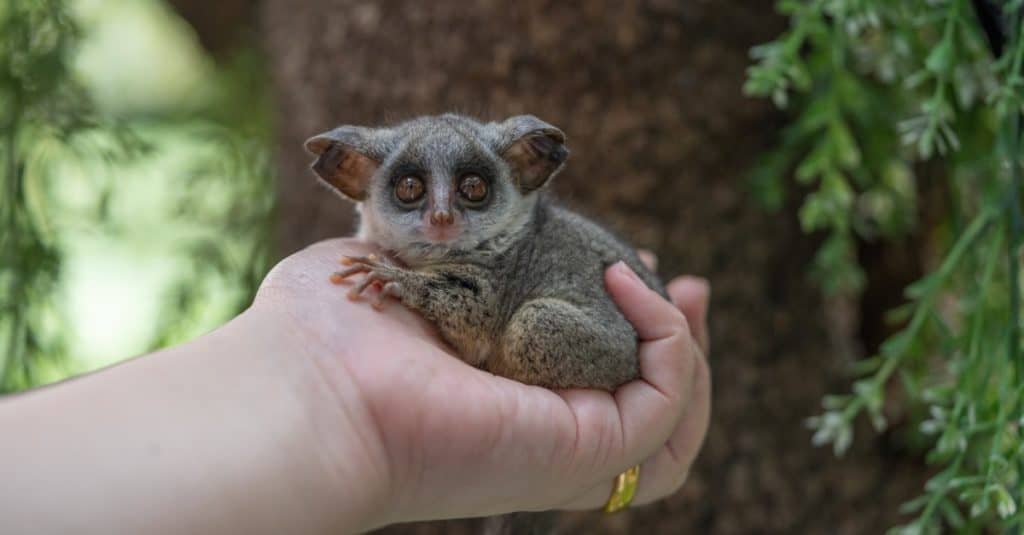
“Galago” is another name for a bush baby.
©akegooseberry/Shutterstock.com
These small primates are legal to own in almost half of the U.S. states. Bush babies are native to Africa, where their habitat can range from open savannas to tropical forests. Their small size and reclusive natures make them seem like a good choice for a pet, but that doesn’t take into account their curiosity and agility.
Bush babies are active and intelligent and require high levels of stimulation. Unfortunately, as nocturnal animals, their most active hours are during the night. Solitary bush babies risk becoming agitated and anxious, so it’s better to keep at least two of them. Bush babies are agile climbers and have the ability to jump long distances between trees. They require a large amount of space to explore, but they can still be quite destructive.
14. Axolotl
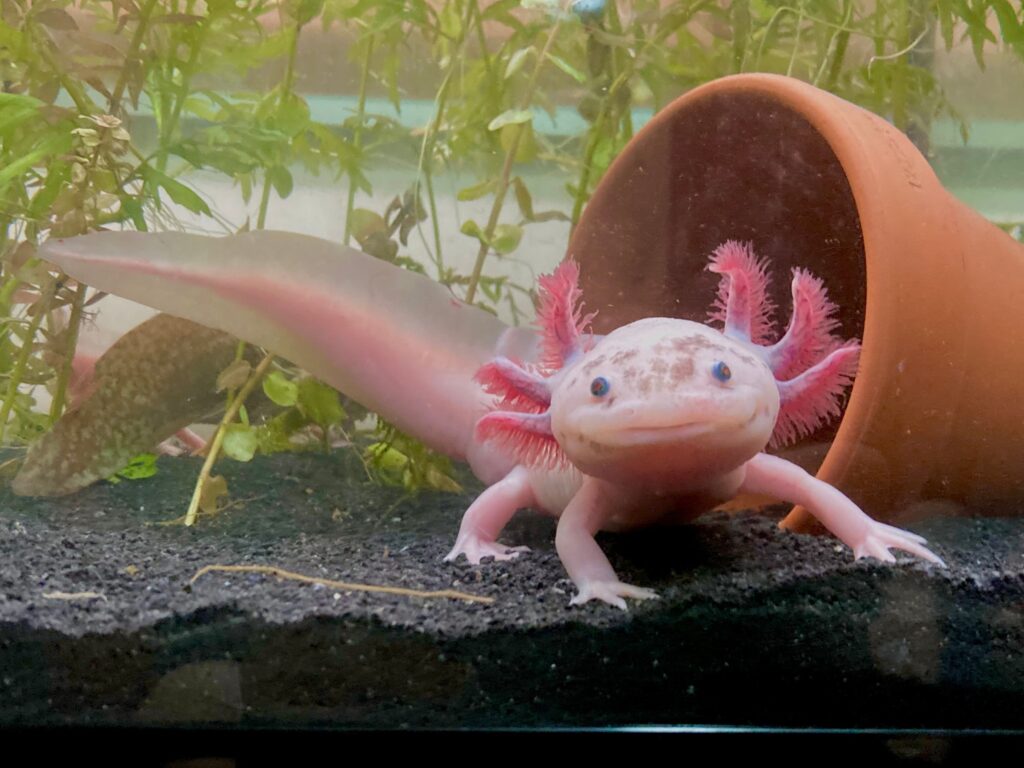
Axolotls have the ability to regenerate their organs and other body parts.
©axolotlowner/Shutterstock.com
Legal to own in every state except Maine, New Jersey, and California, axolotls are an endangered species of salamander. Axolotls have a unique appearance that is characterized by small limbs and mouths that seem to smile. They are native to the Lake Xochimilco region in Mexico.
As pets, axolotls are moderately challenging and may not be a good choice for owners who don’t have experience with amphibians. Axolotls are fragile creatures since they lack bones. They have specific temperature requirements, and their enclosures must contain clean, filtered water.
Axoltls eat brine shrimp, insects, worms, and tadpoles. It can be difficult to find veterinary care for a pet axolotl, as many veterinarians lack experience with these creatures.
15. Sloth
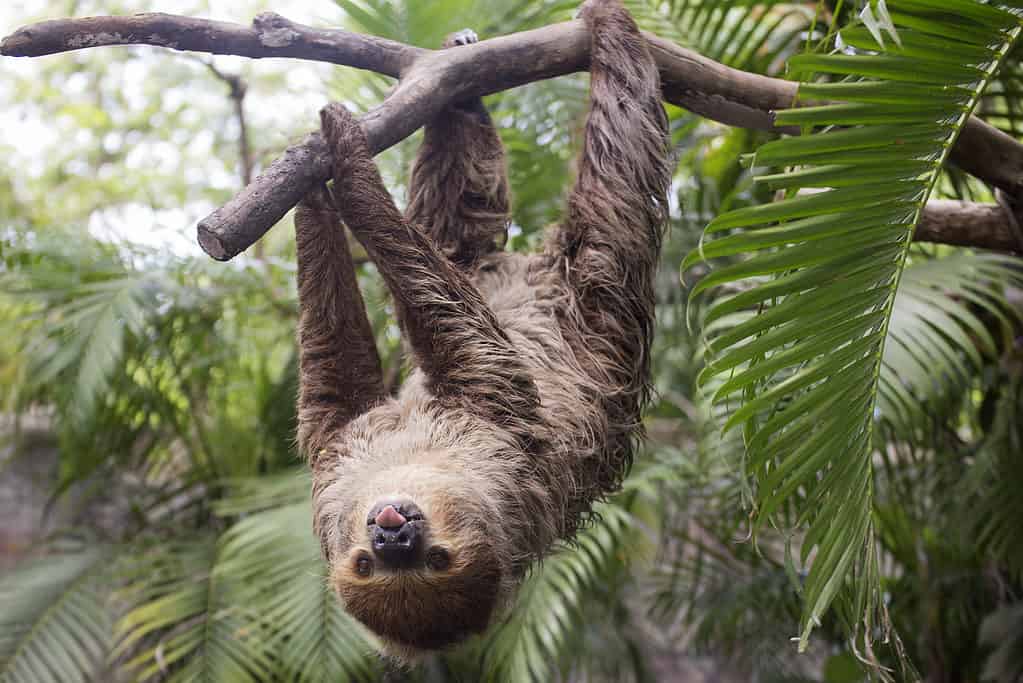
Sloths are the slowest-moving animals in the world.
©iStock.com/Kung_Mangkorn
Known for their slow speeds and sleepy dispositions, sloths are legal to own as a pet in 35 states. Sloths are native to South and Central America, where they inhabit trees in heavily forested areas.
While sloths are mostly docile, they have long claw-like nails and strong teeth they can use to inflict injuries. Because they are so slow, they cannot outrun predators, so their ability to bite and claw is essential for their survival.
Sloths require specific conditions in order to survive as a pet. Their enclosure must have areas they can climb, and they need a consistent temperature with high humidity. Pet sloths require a specialized diet of leaves from their native areas, which may be difficult to procure. These animals don’t require socializing or playtime, but they also do not tolerate cuddles or affection, making them bizarre pets to keep in your home.
The photo featured at the top of this post is © GoodFocused/Shutterstock.com
Thank you for reading! Have some feedback for us? Contact the AZ Animals editorial team.



